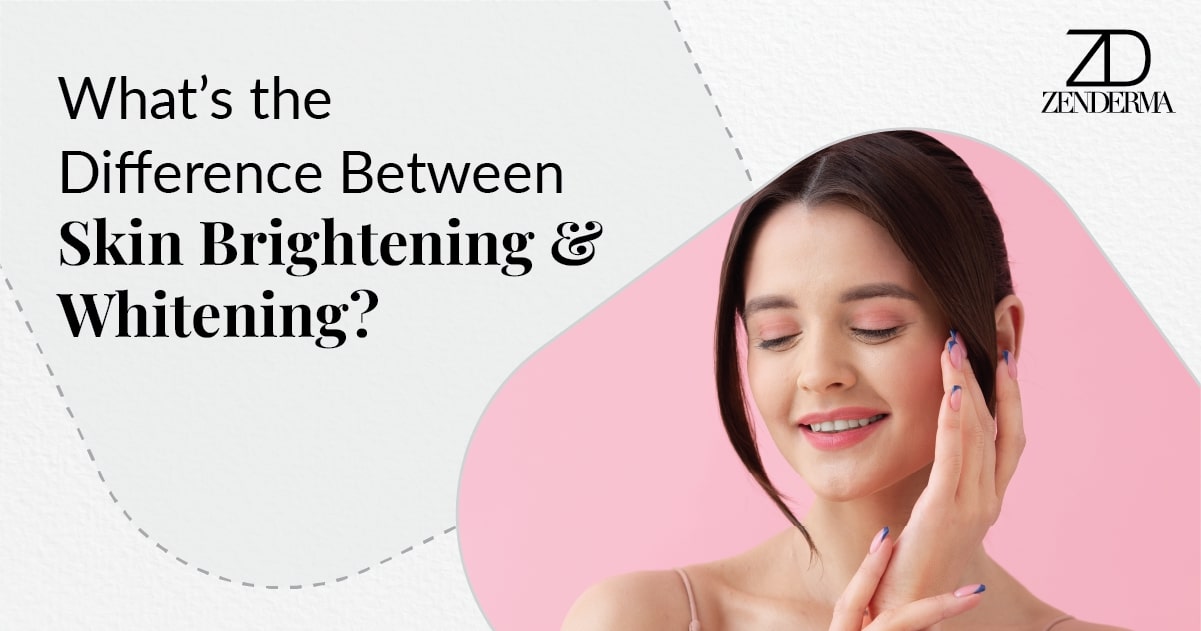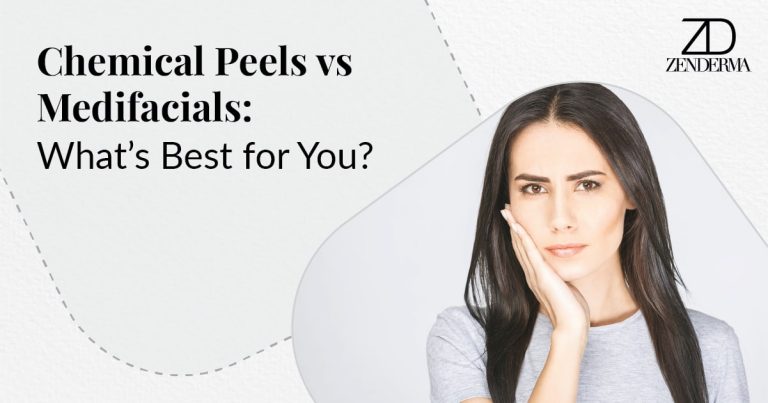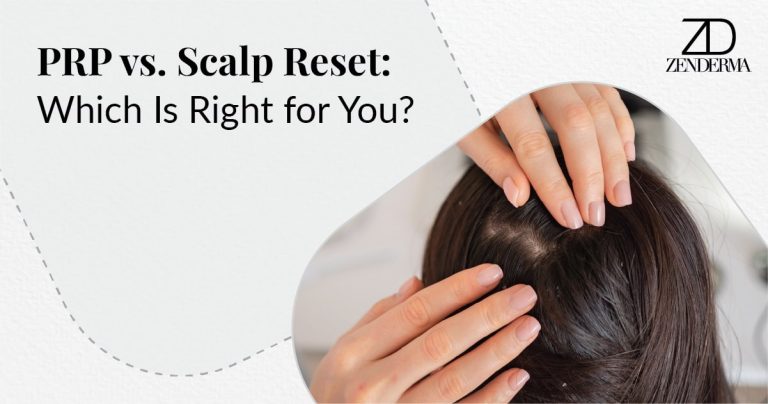Brightening and whitening are often mistakenly used interchangeably, but they are two different objectives. Brightening is enhancing the natural radiance of your skin through boosting tone and texture, while whitening reduces the complexion by diminishing melanin. Understanding the difference enables you to choose the right treatment for your objectives.
In the world of skincare, terms like “whitening” and “brightening” are thrown around but never actually grasped. Both vow to make your skin more radiant, but in rather dissimilar ways. If you’re seeking to get glowing again or battle pigment, it’s recognising the difference that will lead you toward the right treatment. Let’s get started.
What Is Skin Brightening?
Skin brightening is intended to rejuvenate dull, lacklustre skin and restore its original radiance. It does not change your skin colour but corrects it instead by:
- Removing dead skin cells
- Facilitating the production of collagen
- Depigmenting dark patches and patches of uneven colour
- Improving hydration and elasticity
Some of the usual ingredients are:
- Vitamin C (collagen stimulator and antioxidant)
- Niacinamide (improves tone and texture)
- AHAs like glycolic acid (exfoliating)
- Liquorice extract and arbutin (gentle pigment reducers)
Brightening is suitable for those fighting sun spots, post-acne scars, or general dullness.
What Is Skin Whitening?
Skin whitening, on the other hand, reduces the overall color of the skin by suppressing melanin production. It addresses:
- Hyperpigmentation
- Melasma
- Dark spots and discoloration
Common ingredients are:
- Hydroquinone (melanin inhibitor)
- Kojic acid
- Glutathione
- Retinoids
Whitening treatments are stronger and must be applied cautiously. Misuse or overuse will cause side effects like irritation or patchy lightening, therefore professional consultation is strongly recommended.
What is the Difference Between Skin Brightening & Whitening?
While used interchangeably sometimes, skin whitening and skin brightening are two different skincare goals, approaches, and results. Knowing what each is, you can pick products and treatments most appropriate for your own skin care journey.
1. Objective
Skin Brightening is all about resurfacing and brightening up your natural radiance. The aim is to improve skin clarity and regain that healthy glow by minimising dullness, tiredness, and mild discolouration.
Skin Whitening, however, aims at lightening the overall complexion by inhibiting melanin formation, usually to achieve a lighter tone.
2. Mechanism
Brightening is addressed from the outside in, typically through exfoliation, moisturising, and activation of cell turnover of the skin. These treatments smooth out texture, correct uneven tone, and reveal newer, more radiant complexion layers.
Whitening addresses the melanin pathway by blocking the ability of skin cells to produce pigment. Whitening also generally involves biochemical blockage of the enzyme tyrosinase, which builds melanin.
3. Ingredients
Brightening agents are mild and comprise:
- Vitamin C for antioxidant function and collagen stimulation
- Niacinamide to balance pores and treat tone
- Alpha Hydroxy Acids (AHAs) to exfoliate dead skin cells
- Liquorice extract or arbutin for mild, gentle lightening
- Whitening treatments include more intense actives like
- Hydroquinone, a powerful melanin inhibitor
- Kojic acid to manage pigmentation
- Glutathione, an antioxidant most frequently utilised in supplements or IV injections to whiten the skin
4. Ideal For
Brightening is suitable for patients with:
- Dullness
- Post-acne pigmentation
- Mild sun damage
- Irregular texture or tone
Whitening is used to treat:
- Severe hyperpigmentation
- Melasma
- Age spots or hormonal pigmentation
- Difference in overall tone
5. Skin Tone Change
Brightening lightens up your skin’s current tone, making it look healthier and brighter without altering its depth.
Brightening reduces the production of melanin in the skin to lighten the base color of your complexion.
6. Safety
Bleaching products are normally well tolerated and safer across all skin types, as long as they are applied daily with sun protection.
Whitening should be done under dermatologic supervision since misuse of harsh agents such as hydroquinone can lead to side effects such as irritation, inflammation, or rebound pigmentation.
To summarise: Skin whitening and brightening can sound like the same thing, but they take skin care from completely opposite directions philosophy and outcome-wise.
Brightening is a matter of refinement, not revolution. Imagine buffing a gemstone to restore its original brilliance. Brightening maximises the vitality of your skin by refining texture, enhancing hydration, and erasing dullness, dark spots, or small blemishes. Brightening treatments are perfect for renewing what already exists in your skin, your skin’s natural radiance, without changing its natural tone.
Whitening, on the other hand, is trying to change the baseline. It’s more like repainting a canvas than polishing what already exists. Whitening treatments are looking to lighten the complexion as a whole by inhibiting melanin production. This can be beneficial for someone wanting to minimize hyperpigmentation, melasma, or darker spots but it’s a more drastic path that needs to be taken carefully and safely.
Whatever path you take, the true victory is nourishing your skin’s long-term health, being mindful of its natural equilibrium, and selecting treatments that support rather than destroy. Your skin speaks volumes about you, treat it as a legacy.
Why to Opt for Zenderma for Skin Whitening & Brightening?
Zenderma is unique in its science-supported, dermatologist-guided skin care strategy. Here’s why it’s a known name:
- Personalised Treatments: Your skin is unique. Zenderma offers personalised routines that are specifically designed to suit your skin’s type, tone, and concerns.
- State-of-the-Art Technology: From laser technology to medical-grade peels, Zenderma utilises the latest technology for secure and effective results.
- Ethical & Safe Methods: No toxic harsh chemical bleaching chemicals. Only evidence-based ingredients and techniques.
- Trusted Team: Led by experienced dermatologists who personally guide you through every stage of your skin journey.
- Holistic Care: Zenderma doesn’t treat symptoms, it heals your skin for the long term.
Whether brightening your tone or treating more serious pigmentation concerns, Zenderma is being the best skin treatment in Chennai provides a balanced, ethical, and effective solution.
Conclusion
Knowing the difference between brightening and whitening empowers you to make smart, healthy skin care choices. Brightening enhances your innate glow, whereas whitening is aimed at fighting tone and pigmentation. Both, though, serve their specific purpose and only when properly utilised and in moderation. In the skilled hands of Zenderma, it is possible for you to share radiating, healthy skin that mirrors the world your authentic beauty.
FAQs – Difference Between Skin Brightening & Whitening
1. Is whitening the skin safe for every skin type?
Yes, especially when using gentle ingredients like Vitamin C and niacinamide.
2. Do I have the ability to balance brightening and whitening treatments with each other?
Yes, in the hands of a professional to promote non-irritation or overexposure.
3. How long until I see results?
Brightening might unveil results after 2–4 weeks; whitening is longer based on the process.
4. Is it possible to have skin whitening side effects?
Perhaps with powerful products like hydroquinone. Always consult a dermatologist.
5. Is non-invasive treatment available at Zenderma?
Of course, yes. Zenderma provides both topical and non-invasive treatment based on your needs.







